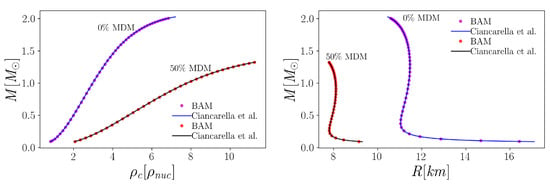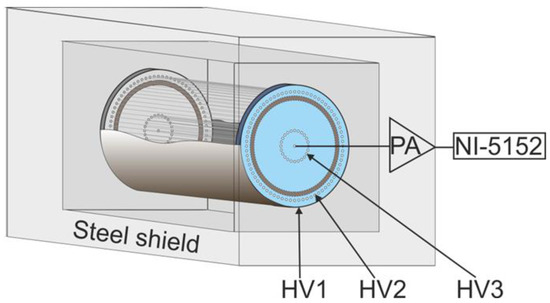Dark Matter and New Physics of Hidden Particles
A topical collection in Particles (ISSN 2571-712X).
Viewed by 6947
Share This Topical Collection
Editors
 Dr. Valery E. Lyubovitskij
Dr. Valery E. Lyubovitskij
 Dr. Valery E. Lyubovitskij
Dr. Valery E. Lyubovitskij
E-Mail
Website
Guest Editor
Institut für Theoretische Physik, Universität Tübingen, Kepler Center for Astro and Particle Physics, Auf der Morgenstelle 14, D–72076 Tübingen, Germany
Interests: AdS/QCD; effective field theories; hadron physics; physics beyond SM
Special Issues, Collections and Topics in MDPI journals
 Dr. Dmitry V. Kirpichnikov
Dr. Dmitry V. Kirpichnikov
 Dr. Dmitry V. Kirpichnikov
Dr. Dmitry V. Kirpichnikov
E-Mail
Guest Editor
Institute for Nuclear Research of the Russian Academy of Sciences,117312 Moscow, Russia
Interests: Axion-like Particles; Millicharged Particles; Dark Photon; Dark Matter; SM extension; hidden sector; beam-dump experiments; collider phenomenology; statistics; MC simulation
 Dr. Alexey S. Zhevlakov
Dr. Alexey S. Zhevlakov
 Dr. Alexey S. Zhevlakov
Dr. Alexey S. Zhevlakov
E-Mail
Guest Editor
Department of Physics, Tomsk State University, 634050 Tomsk, Russia
Interests: hadron physics; perturbative QCD; effective field theories; strong CP violation; muon anomalous magnetic moment; dark matter; non-plane wave physics
Topical Collection Information
Dear Colleagues,
We are happy to announce that the Open Access Journal Particles will produce a Special Issue on “Dark Matter and New Physics of Hidden Particles”, focused on recent developments in this area.
The papers submitted to this Special Issue are expected to reflect original work or be a balanced review of the field. All submissions will be peer-reviewed by internationally recognized experts.
This Special Issue will contain up-to-date coverage of the topic “Dark Matter and New Physics of Hidden Particles" , which is centered on novel results in experimental and theoretical study of Dark Matter and Hidden Particles. We expect that this Issue will have a cross-disciplinary nature and will be equally useful for wide audiences: students, postdoctoral fellows, and senior researchers.
As the Guest Editors, we would like to invite you to submit your unpublished and original research relevant to this topic for publication in this Special Issue of Particles.
Dr. Valery E. Lyubovitskij
Dr. Dmitry V. Kirpichnikov
Dr. Alexey S. Zhevlakov
Guest Editors
Manuscript Submission Information
Manuscripts should be submitted online at www.mdpi.com by registering and logging in to this website. Once you are registered, click here to go to the submission form. Manuscripts can be submitted until the deadline. All submissions that pass pre-check are peer-reviewed. Accepted papers will be published continuously in the journal (as soon as accepted) and will be listed together on the collection website. Research articles, review articles as well as short communications are invited. For planned papers, a title and short abstract (about 100 words) can be sent to the Editorial Office for announcement on this website.
Submitted manuscripts should not have been published previously, nor be under consideration for publication elsewhere (except conference proceedings papers). All manuscripts are thoroughly refereed through a single-blind peer-review process. A guide for authors and other relevant information for submission of manuscripts is available on the Instructions for Authors page. Particles is an international peer-reviewed open access quarterly journal published by MDPI.
Please visit the Instructions for Authors page before submitting a manuscript.
The Article Processing Charge (APC) for publication in this open access journal is 1600 CHF (Swiss Francs).
Submitted papers should be well formatted and use good English. Authors may use MDPI's
English editing service prior to publication or during author revisions.
Published Papers (3 papers)
Open AccessArticle
Numerical Simulations of Dark Matter Admixed Neutron Star Binaries
by
Mattia Emma, Federico Schianchi, Francesco Pannarale, Violetta Sagun and Tim Dietrich
Cited by 15 | Viewed by 2045
Abstract
Multi-messenger observations of compact binary mergers provide a new way to constrain the nature of dark matter that may accumulate in and around neutron stars. In this article, we extend the infrastructure of our numerical-relativity code BAM to enable the simulation of neutron
[...] Read more.
Multi-messenger observations of compact binary mergers provide a new way to constrain the nature of dark matter that may accumulate in and around neutron stars. In this article, we extend the infrastructure of our numerical-relativity code BAM to enable the simulation of neutron stars that contain an additional mirror dark matter component. We perform single star tests to verify our code and the first binary neutron star simulations of this kind. We find that the presence of dark matter reduces the lifetime of the merger remnant and favors a prompt collapse to a black hole. Furthermore, we find differences in the merger time for systems with the same total mass and mass ratio, but different amounts of dark matter. Finally, we find that electromagnetic signals produced by the merger of binary neutron stars admixed with dark matter are very unlikely to be as bright as their dark matter-free counterparts. Given the increased sensitivity of multi-messenger facilities, our analysis gives a new perspective on how to probe the presence of dark matter.
Full article
►▼
Show Figures
Open AccessArticle
Diurnal Variations of the Count Rates from Dark Photons in PHELEX
by
Anatoly Kopylov, Igor Orekhov and Valery Petukhov
Cited by 3 | Viewed by 1384
Abstract
This paper reports the PHELEX experiment, i.e., PHoton–ELectron EXperiment, to search for the dark photons (DPs) of cold dark matter using a multicathode counter technique specifically developed for this purpose by the authors. The paper presents new data, a novel upper limit for
[...] Read more.
This paper reports the PHELEX experiment, i.e., PHoton–ELectron EXperiment, to search for the dark photons (DPs) of cold dark matter using a multicathode counter technique specifically developed for this purpose by the authors. The paper presents new data, a novel upper limit for the constant of kinetic mixing, and the first results of measurements of the diurnal variations in solar and stellar frames. The perspectives of this method are outlined in terms of the search for DPs.
Full article
►▼
Show Figures
Open AccessArticle
Constraints on CP-Odd ALP Couplings from EDM Limits of Fermions
by
Dmitri V. Kirpichnikov, Valery E. Lyubovitskij and Alexey S. Zhevlakov
Cited by 9 | Viewed by 2425
Abstract
We discuss constraints on soft CP-violating couplings of axion-like particles with photon and fermions by using data on electric dipole moments of standard model particles. In particular, for the axion-like particle (ALP) leptophilic scenario, we derive bounds on CP-odd ALP-photon-photon coupling from data
[...] Read more.
We discuss constraints on soft CP-violating couplings of axion-like particles with photon and fermions by using data on electric dipole moments of standard model particles. In particular, for the axion-like particle (ALP) leptophilic scenario, we derive bounds on CP-odd ALP-photon-photon coupling from data of the ACME collaboration on electron EDM. We also discuss prospects of the storage ring experiment to constrain the ALP–photon–photon coupling from data on proton EDM for the simplified hadrophilic interactions of ALP. The resulting constraints from experimental bounds on the muon and neutron EDMs are weak. We set constraint on the CP-odd ALP coupling with electron and derive bounds on combinations of coupling constants, which involve soft CP-violating terms.
Full article
►▼
Show Figures








